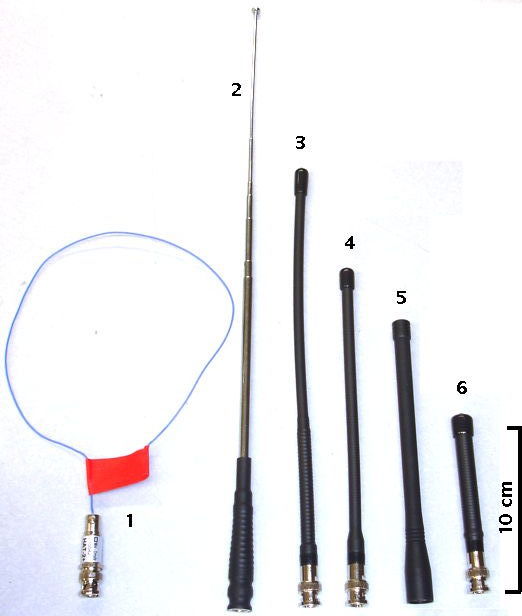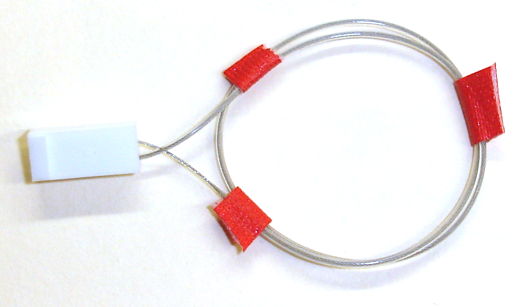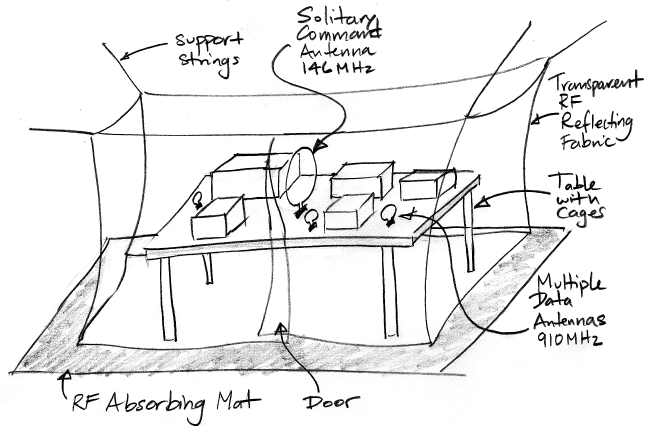
The figure below shows a the antennas we tested as transmitters. The one marked (2) extends to a full length of 91 cm and provides us with the most efficient transmission. It is a half-wave antenna tuned to present a 50-Ω input impedance at 146.25 MHz.

We abandoned reception antennas made out of helical steel springs. These antennas were motivated by our desire to use one of the ISL's lamp power leads as an antenna. But subsequent calculations showed that this was impractical. Our best-performing reception antenna is the two-turn loop shown below. The loop diameter is 3 cm. It is made out of silicone-insulated, stranded, stainless steel wire. We connect on end to the Command Receiver's RF input and the other end to the Command Receiver's ground potential. Unlike a quarter-wave antenna, the loop antenna picks up RF power without cooperation from the Command Receiver's ground plane. This makes its performance less dependent upon the dimensions of the Command Receiver circuit.

The booster amplifier produces 1.4 W of 146-MHz RF power. We feed this directly into the half-wave telescoping antenna and we receive it with our small, two-turn loop. We rotate and translate the Command Receiver on the end of a stick. At ranges up to 200 cm, we observe no loss of reception in any orientation. At range 300 cm, reception fails in 8% of orientations.

We anticipate the ISL being used on a table-top within a canopy-style Faraday enclosure, as shown above. It may be that within the reflecting walls of such an enclosure, command reception will be less reliable. It may be that implantation within an animal body will hinder reception. But we are confident that reception will be reliable at ranges up to 100 cm, and that will be good enough.